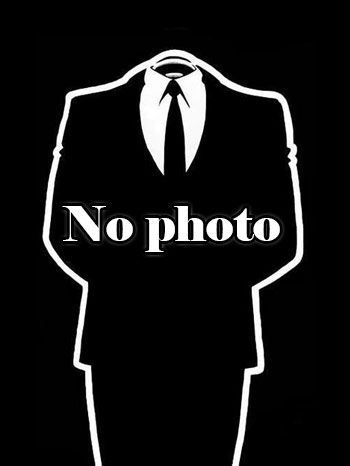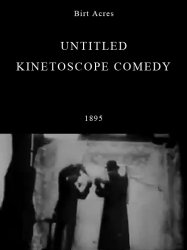Birt Acres is a Director, Producer and Cinematography British born on 23 july 1854 at Virginia (USA)

Birt Acres (23 July 1854 – 27 December 1918) was a photographer and film pioneer.
Born in Richmond, Virginia, to English parents, he invented the first British 35 mm moving picture camera, the first daylight loading home movie camera and projector, Birtac, was the first travelling newsreel reporter in international film history and the first European film maker who had his films shown in the United States in public performances. He contributed much to the introduction and development of cinematography in all its aspects, from the construction of cameras, projectors, film viewers, coating- and slitting machines and the manufacture of highly sensitized 35 mm raw film stock, to mobile newsreel reporting and the public projections of moving pictures.
With his partner Robert W. Paul, he was the first person to build and run a working 35 mm camera in Britain. The pair fell out after Acres patented their design in his own name on 27 May 1895. He made some very early silent films during the Victorian era including in 1895: a film of the Oxford and Cambridge Boat Race, The Arrest of a Pickpocket, The Comic Shoeblack, The Boxing Kangaroo and Performing Bears.
Acres was a Fellow of the Royal Photographic Society. On 14 January 1896, he demonstrated his Kineopticon system to members and wives of the Society, at the Queen's Hall in London. This was the first public film show to an audience in the United Kingdom. Robert Paul's first solo theatrical programme was at the Alhambra Theatre on 25 March 1896.
Source : Wikidata
Birt Acres

- Infos
- Photos
- Best films
- Family
- Characters
- Awards
Nationality United-kingdom
Birth 23 july 1854 at Virginia (USA)
Death 27 december 1918 (at 64 years) at London (United-kingdom)
Birth 23 july 1854 at Virginia (USA)
Death 27 december 1918 (at 64 years) at London (United-kingdom)
Born in Richmond, Virginia, to English parents, he invented the first British 35 mm moving picture camera, the first daylight loading home movie camera and projector, Birtac, was the first travelling newsreel reporter in international film history and the first European film maker who had his films shown in the United States in public performances. He contributed much to the introduction and development of cinematography in all its aspects, from the construction of cameras, projectors, film viewers, coating- and slitting machines and the manufacture of highly sensitized 35 mm raw film stock, to mobile newsreel reporting and the public projections of moving pictures.
With his partner Robert W. Paul, he was the first person to build and run a working 35 mm camera in Britain. The pair fell out after Acres patented their design in his own name on 27 May 1895. He made some very early silent films during the Victorian era including in 1895: a film of the Oxford and Cambridge Boat Race, The Arrest of a Pickpocket, The Comic Shoeblack, The Boxing Kangaroo and Performing Bears.
Acres was a Fellow of the Royal Photographic Society. On 14 January 1896, he demonstrated his Kineopticon system to members and wives of the Society, at the Queen's Hall in London. This was the first public film show to an audience in the United Kingdom. Robert Paul's first solo theatrical programme was at the Alhambra Theatre on 25 March 1896.
Biography
Né aux États-Unis de parents anglais, Birt Acres se retrouve orphelin pendant la guerre de Sécession. Il part alors en Angleterre où il se fait embaucher dans une fabrique de matériel photographique, la Royal Photographic Society. En 1893, il invente un appareil muni de plaques à exposition rapide avec lequel il photographie les nuages. En 1895, après avoir vu les premiers films réalisés par William Kennedy Laurie Dickson avec le Kinétographe imaginé par Thomas Edison, il construit une machine pour enregistrer des images photographiques en mouvement, le Kineopticon, l'une des premières caméras de cinéma (avec le Cinématographe des frères Lumière inventé au cours de la même année). Contrairement au Kinétographe qui est actionné par un moteur électrique nécessitant un branchement sur le secteur, le Kineopticon est entraîné par une manivelle, comme le Cinématographe. Avec Robert W. Paul, qui est le premier réalisateur et producteur de cinéma britannique, il filme des événements en extérieurs tels que le Derby en Angleterre ou l'ouverture du canal de Kiel en Allemagne. Pour regarder les films ainsi obtenus, les deux hommes utilisent le Kinétoscope d'Edison à visionnement individuel, que Robert W. Paul, profitant de l'absence de brevet international de cette machine, contrefait et vend à grande échelle. Le succès du Cinématographe Lumière oblige Birt Acres à modifier son invention pour en faire également, à l'instar de la machine lyonnaise, non seulement un appareil de prise de vues, mais aussi un appareil de projection. Après plusieurs films, un désaccord le sépare de Robert W. Paul et il s'intéresse alors davantage à l'invention scientifique qu'au spectacle. Il continue jusqu'à la fin de ses jours à expérimenter de nouvelles techniques de prise de vues et de prise de son.Usually with
Filmography of Birt Acres (12 films)
Director

Directed by Birt Acres
Origin United-kingdom
Genres Documentary
Themes Films about animals, Sports films, Documentary films about sports, Films about horses, Horse sports in film
Rating47%





A stationary camera looks diagonally across a racetrack toward the infield showing the horses as they pass. Once the horses have passed the camera it is clear that the race has come to an end and there is a close finish between three horses. Once the race is over police officers run onto the field. The camera also displays various members of the audience moving around.
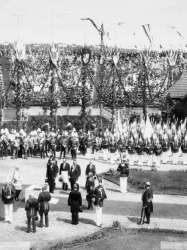
Directed by Birt Acres
Origin United-kingdom
Genres Documentary
Rating39%





The film opens with a shot of the North Sea Canal with a winged statue on the far side. Three men row towards the shore in a small rowing boat while a small boy waits on the quayside and then turns to face the camera.
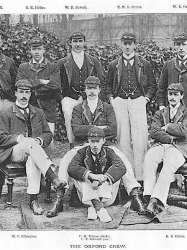
Directed by Birt Acres
Origin United-kingdom
Genres Documentary
Themes Seafaring films, Sports films, Transport films, Documentary films about sports, Documentary films about technology
Rating45%





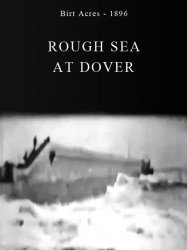
Directed by Birt Acres, Robert W. Paul
Origin United-kingdom
Genres Documentary
Themes Documentary films about nature
Rating52%





Une mer forte lance de puissantes lames à l’assaut de la digue de Douvres. Le film, prévu pour être visionné individuellement sur les kinétoscopes contrefaits, est enregistré certainement entre 30 et 40 images par seconde, ce qui, par la suite avec les appareils de projection qui tournent à l'époque à 16 images par seconde, donne un rendu impressionnant, dû au ralenti .
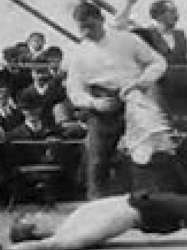
Directed by Birt Acres
Origin United-kingdom
Genres Documentary
Themes Sports films, Martial arts films, Boxing films
Rating50%






Directed by Birt Acres
Origin United-kingdom
Genres Documentary
Themes Dance films, Films about music and musicians, Documentary films about music and musicians, Documentaire sur une personnalité, Musical films
Rating46%





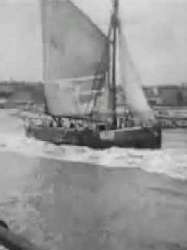
Directed by Birt Acres
Origin United-kingdom
Genres Documentary
Rating46%





Three fishing boats are seen leaving the harbour at Great Yarmouth. Only the tail end of the first is seen as it leaves the harbour to the right. The second (named "Thrive" and registered as YH 120) is pulled by a steam paddle tugboat. A third fishing boat (named "I Will" and registered as YH 723) sails off-screen to the right.
Producer

Directed by Birt Acres
Origin United-kingdom
Genres Documentary
Themes Films about animals, Sports films, Documentary films about sports, Films about horses, Horse sports in film
Roles Producer
Rating47%





A stationary camera looks diagonally across a racetrack toward the infield showing the horses as they pass. Once the horses have passed the camera it is clear that the race has come to an end and there is a close finish between three horses. Once the race is over police officers run onto the field. The camera also displays various members of the audience moving around.

Directed by Birt Acres
Origin United-kingdom
Genres Documentary
Roles Producer
Rating39%





The film opens with a shot of the North Sea Canal with a winged statue on the far side. Three men row towards the shore in a small rowing boat while a small boy waits on the quayside and then turns to face the camera.

Directed by Birt Acres
Origin United-kingdom
Genres Documentary
Themes Seafaring films, Sports films, Transport films, Documentary films about sports, Documentary films about technology
Roles Producer
Rating45%





 Connection
Connection
